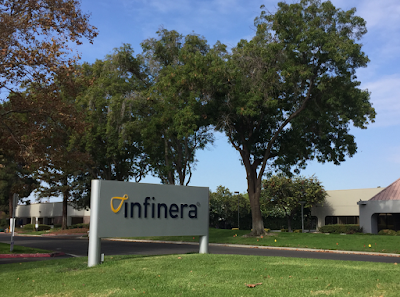Edgecore Networks is contributing the hardware design for the “Cassini” packet transponder to the Telecom Infra Project (TIP).
Cassini is a modular open-source whitebox packet transponder offering a flexible mix of 100 Gigabit Ethernet (GbE) packet switching ports and 100/200 Gbps coherent optical interfaces for data center interconnect and service provider backhaul use cases. The design will support disaggregated software options including IP Infusion OcNOS™ and open source alternatives.
Edgecore said it developed Cassini with leading optical companies— NTT Electronics, Acacia Communications, and Finisar.
 “The Open Optical Packet Transport project group in TIP pioneered the whitebox packet transponder concept with its introduction last year of the Voyager design which has gained significant interest in the community and from network operators,” said George Tchaparian, CEO, Edgecore Networks. “We have long supported open whitebox hardware with our many switch, PON OLT, and WiFi design contributions to the Open Compute Project®, and are now pleased to contribute the Cassini design to TIP as an open platform to provide more flexible whitebox choices to operators and encourage further collaboration between the packet switching and optical technology worlds.”
“The Open Optical Packet Transport project group in TIP pioneered the whitebox packet transponder concept with its introduction last year of the Voyager design which has gained significant interest in the community and from network operators,” said George Tchaparian, CEO, Edgecore Networks. “We have long supported open whitebox hardware with our many switch, PON OLT, and WiFi design contributions to the Open Compute Project®, and are now pleased to contribute the Cassini design to TIP as an open platform to provide more flexible whitebox choices to operators and encourage further collaboration between the packet switching and optical technology worlds.”
Highlights of the Cassini packet transponder
Cassini is a modular open-source whitebox packet transponder offering a flexible mix of 100 Gigabit Ethernet (GbE) packet switching ports and 100/200 Gbps coherent optical interfaces for data center interconnect and service provider backhaul use cases. The design will support disaggregated software options including IP Infusion OcNOS™ and open source alternatives.
Edgecore said it developed Cassini with leading optical companies— NTT Electronics, Acacia Communications, and Finisar.
 “The Open Optical Packet Transport project group in TIP pioneered the whitebox packet transponder concept with its introduction last year of the Voyager design which has gained significant interest in the community and from network operators,” said George Tchaparian, CEO, Edgecore Networks. “We have long supported open whitebox hardware with our many switch, PON OLT, and WiFi design contributions to the Open Compute Project®, and are now pleased to contribute the Cassini design to TIP as an open platform to provide more flexible whitebox choices to operators and encourage further collaboration between the packet switching and optical technology worlds.”
“The Open Optical Packet Transport project group in TIP pioneered the whitebox packet transponder concept with its introduction last year of the Voyager design which has gained significant interest in the community and from network operators,” said George Tchaparian, CEO, Edgecore Networks. “We have long supported open whitebox hardware with our many switch, PON OLT, and WiFi design contributions to the Open Compute Project®, and are now pleased to contribute the Cassini design to TIP as an open platform to provide more flexible whitebox choices to operators and encourage further collaboration between the packet switching and optical technology worlds.”Highlights of the Cassini packet transponder
- a 1.5RU form factor
- system throughput of 3.2Tbps
- based on Broadcom StrataXGS Tomahawk Plus switch silicon
- 16 fixed 100 Gigabit Ethernet QSFP28 ports, plus eight line card slots
- supports a flexible mix of additional 100GbE ports or ACO/DCO optical ports based on coherent DSP and optical transceivers
- supports Ethernet and optical line cards with MACsec security to enable secure encrypted connections on both client-side links and metro or wide area connections.
















